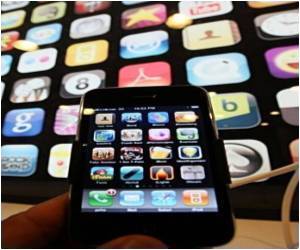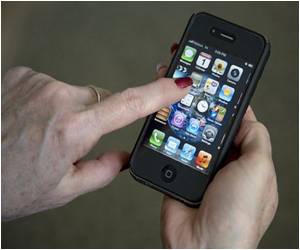Imagine an electronic display nearly as clear as a window. Also image curtain that illuminates a room, as well as smartphone screen that doubles in size, stretching like rubber.

OLED technology is used today in screens for many smartphones and some televisions. The new ultra-stretchable OLED material developed at UCLA could lead to foldable and expandable screens for new classes of smartphones and other personal electronic devices; electronics-integrated clothing; wallpaper-like lighting; new minimally invasive medical tools; and many other applications.
"Our new material is the building block for fully stretchable electronics for consumer devices," said Qibing Pei, a UCLA professor of materials science and engineering and principal investigator on the research. "Along with the development of stretchable thin-film transistors, we believe that fully stretchable interactive OLED displays that are as thin as wallpaper will be achieved in the near future. And this will give creative electronics designers new dimensions to exploit."
The research is published online in the peer-reviewed journal Nature Photonics. The lead author of the study is Jiajie Liang, a postdoctoral scholar in Pei's Soft Materials Research Laboratory at UCLA.
The researchers stretched and restretched the OLED 1,000 times, extending it 30 percent beyond its original shape and size, and it still continued to work at a high efficiency. In another test to determine the material's maximum stretch, the researchers found it could be stretched to more than twice its original size while still functioning. In addition, it can be folded 180 degrees and can be twisted in multiple directions.
The material has a single layer of an electro-luminescent polymer blend sandwiched between a pair of new transparent elastic composite electrodes. These electrodes are made of a network of silver nanowires inlaid into a rubbery polymer, which allows the device to be used at room temperatures. All of these layers are fully stretchable, foldable and twistable. The new material can also be fabricated in a relatively simple all-solution–based process.
Advertisement
The team also demonstrated this ultra-flexible OLED could contain multiple pixels, rather than just a solid block of light. This could pave the way for electronic displays comprising many thousands of pixels. They accomplished this by assembling the silver nanowire–based electrodes into a cross-hatched pattern, with one layer of columns and one layer of rows.
Advertisement
Pei is also a member of the California NanoSystems Institute (CNSI) at UCLA.
Source-Eurekalert









